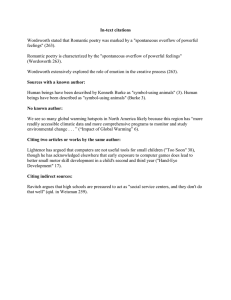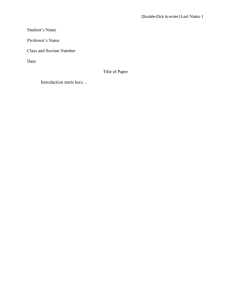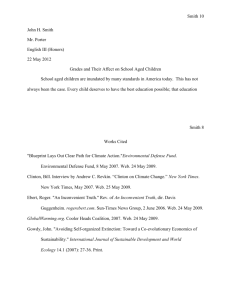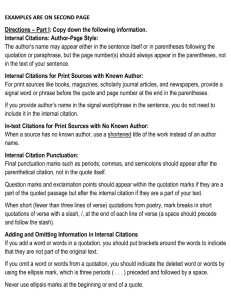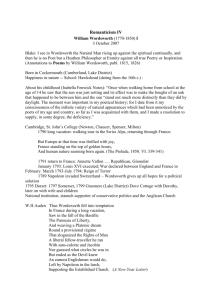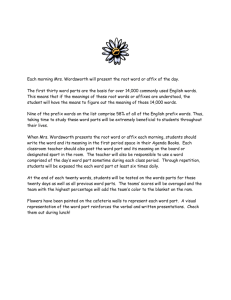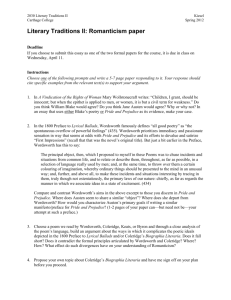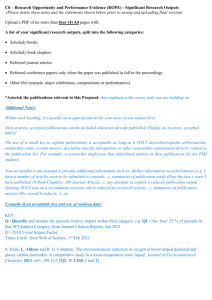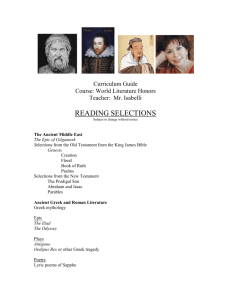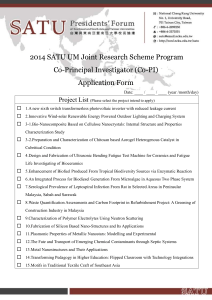HELP Works Cited II H gender and relationship
advertisement
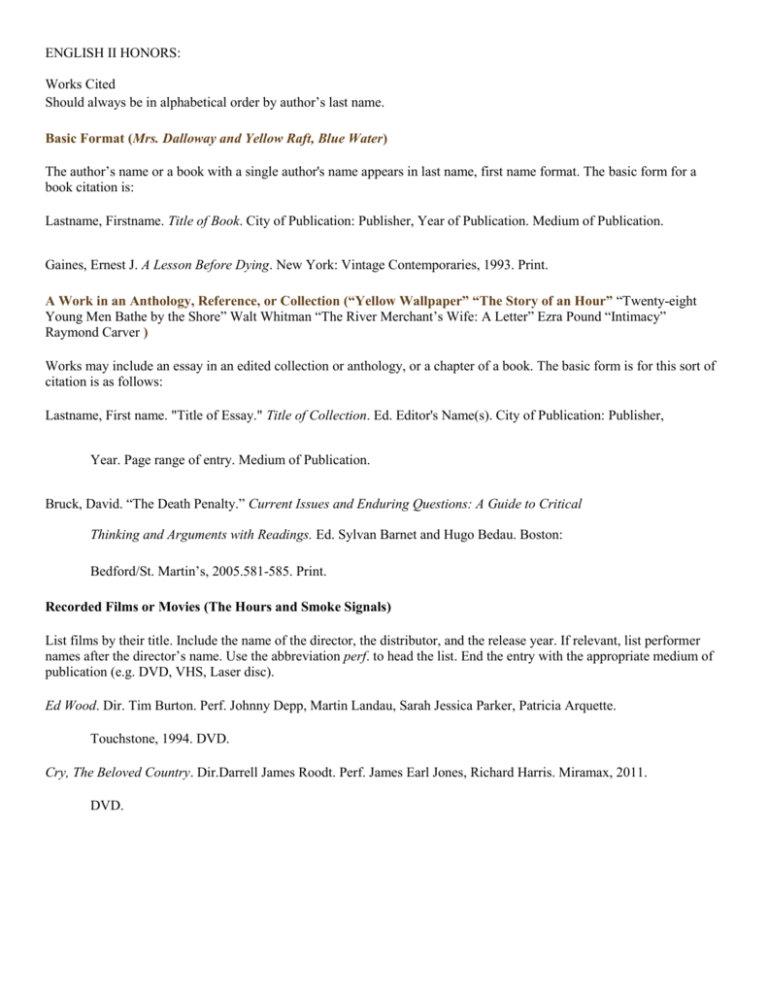
ENGLISH II HONORS: Works Cited Should always be in alphabetical order by author’s last name. Basic Format (Mrs. Dalloway and Yellow Raft, Blue Water) The author’s name or a book with a single author's name appears in last name, first name format. The basic form for a book citation is: Lastname, Firstname. Title of Book. City of Publication: Publisher, Year of Publication. Medium of Publication. Gaines, Ernest J. A Lesson Before Dying. New York: Vintage Contemporaries, 1993. Print. A Work in an Anthology, Reference, or Collection (“Yellow Wallpaper” “The Story of an Hour” “Twenty-eight Young Men Bathe by the Shore” Walt Whitman “The River Merchant’s Wife: A Letter” Ezra Pound “Intimacy” Raymond Carver ) Works may include an essay in an edited collection or anthology, or a chapter of a book. The basic form is for this sort of citation is as follows: Lastname, First name. "Title of Essay." Title of Collection. Ed. Editor's Name(s). City of Publication: Publisher, Year. Page range of entry. Medium of Publication. Bruck, David. “The Death Penalty.” Current Issues and Enduring Questions: A Guide to Critical Thinking and Arguments with Readings. Ed. Sylvan Barnet and Hugo Bedau. Boston: Bedford/St. Martin’s, 2005.581-585. Print. Recorded Films or Movies (The Hours and Smoke Signals) List films by their title. Include the name of the director, the distributor, and the release year. If relevant, list performer names after the director’s name. Use the abbreviation perf. to head the list. End the entry with the appropriate medium of publication (e.g. DVD, VHS, Laser disc). Ed Wood. Dir. Tim Burton. Perf. Johnny Depp, Martin Landau, Sarah Jessica Parker, Patricia Arquette. Touchstone, 1994. DVD. Cry, The Beloved Country. Dir.Darrell James Roodt. Perf. James Earl Jones, Richard Harris. Miramax, 2011. DVD. Article in an Online Scholarly Journal That Also Appears in Print (“Men and Women Writing Women: The Female Perspective and Feminism in U.S Novels and African Novels in French by Male and Female Authors”, Cheryl Lange “The Rhythm of Three Strands: Cultural Braiding in Dorris’ A Yellow Raft, Blue Water” David Cowart “Multivocal Narration and Cultural Negotiation: Dorris” A Yellow Raft, Blue Water and Cloud Chamber” Gordon E. Slethaug “Whitman’s Debt to The Muse” Ulf Kirchdorfer “Redefining Intimacy: Carver and Conversation” Frank Bramlett and David Raabe “Mrs. Dalloway: A Study in Composition” Nathalia Wright) Cite articles in online scholarly journals that also appear in print as you would a scholarly journal in print, including the page range of the article. Provide the medium of publication that you used (in this case, Web) and the date of access. Wheelis, Mark. "Investigating Disease Outbreaks Under a Protocol to the Biological and Toxin Weapons Convention." Emerging Infectious Diseases 6.6 (2000): 595-600. Web. 8 Feb. 2009. Collins, Harold. “Cry, The Beloved Country and The Broken Tribe.” College English 14.7 (1953): 379-385. Web. 18 August 2011. MLA Heading Your name My Name Course Date (11 November 2012) Title should be centered, Times New Roman Font 12. DO NOT bold, underline or italicize your title. In text Citations: These go at the end of the sentence, not at the end of the quote. You cite the author’s last name and page number. In-Text Citations: Author-Page Style MLA format follows the author-page method of in-text citation. This means that the author's last name and the page number(s) from which the quotation or paraphrase is taken must appear in the text, and a complete reference should appear on your Works Cited page. The author's name may appear either in the sentence itself or in parentheses following the quotation or paraphrase, but the page number(s) should always appear in the parentheses, not in the text of your sentence. For example: Wordsworth stated that Romantic poetry was marked by a "spontaneous overflow of powerful feelings" (263). Romantic poetry is characterized by the "spontaneous overflow of powerful feelings" (Wordsworth 263). Wordsworth extensively explored the role of emotion in the creative process (263). Both citations in the examples above, (263) and (Wordsworth 263), tell readers that the information in the sentence can be located on page 263 of a work by an author named Wordsworth. If readers want more information about this source, they can turn to the Works Cited page, where, under the name of Wordsworth, they would find the following information: Wordsworth, William. Lyrical Ballads. London: Oxford U.P., 1967. Print.
